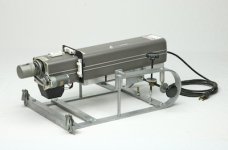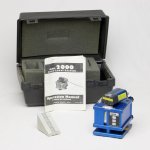- Joined
- Apr 21, 2016
- Messages
- 24
- Points
- 3
Hi, all!
A couple of questions that have been on my mind, and I've been struggling to find good resources to learn about these since there are so many products that fall into these categories. Basically, I have two questions:
Thank you!
A couple of questions that have been on my mind, and I've been struggling to find good resources to learn about these since there are so many products that fall into these categories. Basically, I have two questions:
- How do laser levels generate the laser line?
- I assume it's using some kind a slit filter that sits in front of the beam.
- How do steerable lasers [or laser levels] usually work?
- I figure once you get the laser line, you can just attach the laser to a stepper motor and scan it across whatever surface you need.
Thank you!





